Have you noticed a strange bud forming in the center of your aloe plant?
It’s not a new leaf – you’ve seen those develop and know what the sprouts look like. It’s also not an offshoot or pup, since they form below the leaves. How strange!
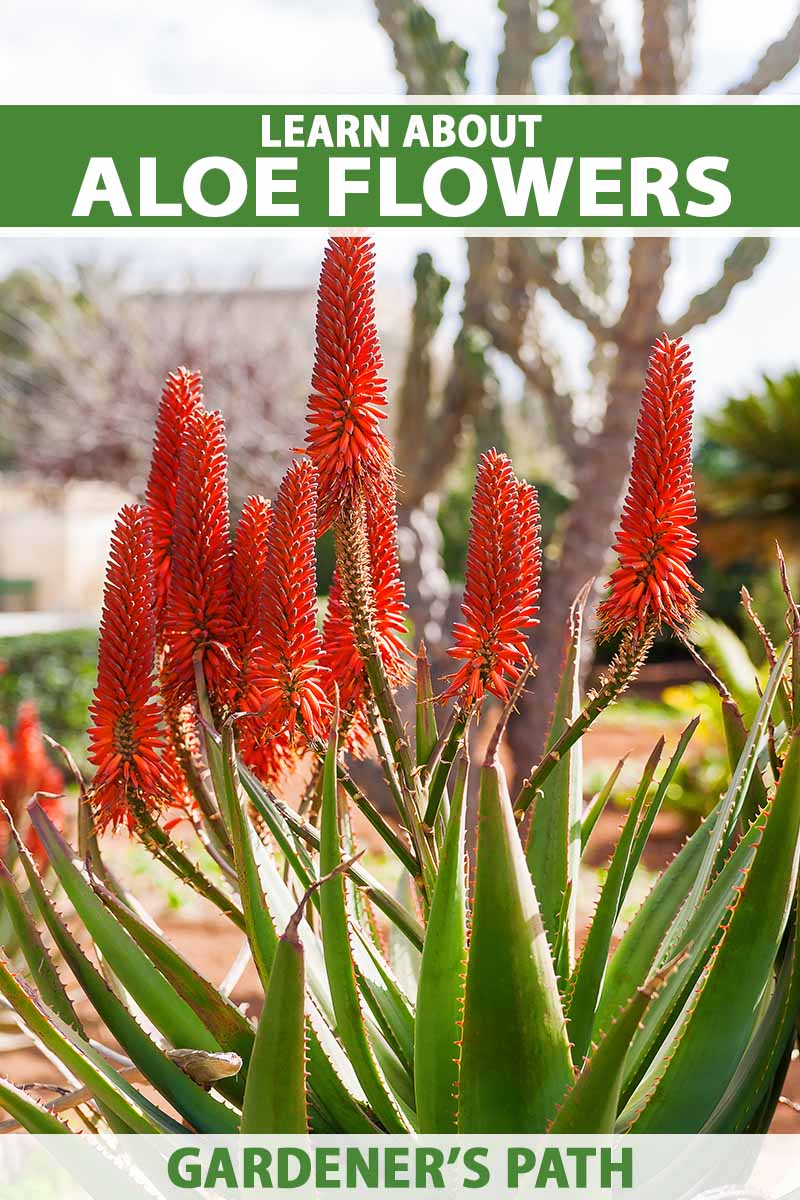
We link to vendors to help you find relevant products. If you buy from one of our links, we may earn a commission.
It might have you scratching your head, but it’s not strange (at least not to the aloe), and it’s a great indication that you’ve been taking good care of your plant.
You’re here for answers, so let’s get straight to it! Read on as we explore flowering in aloe plants. Here’s everything we’ll cover, up ahead:
What You’ll Learn
Do Aloe Plants Bloom?
That little developing structure in the center of the rosette of succulent leaves is, indeed, a bud!
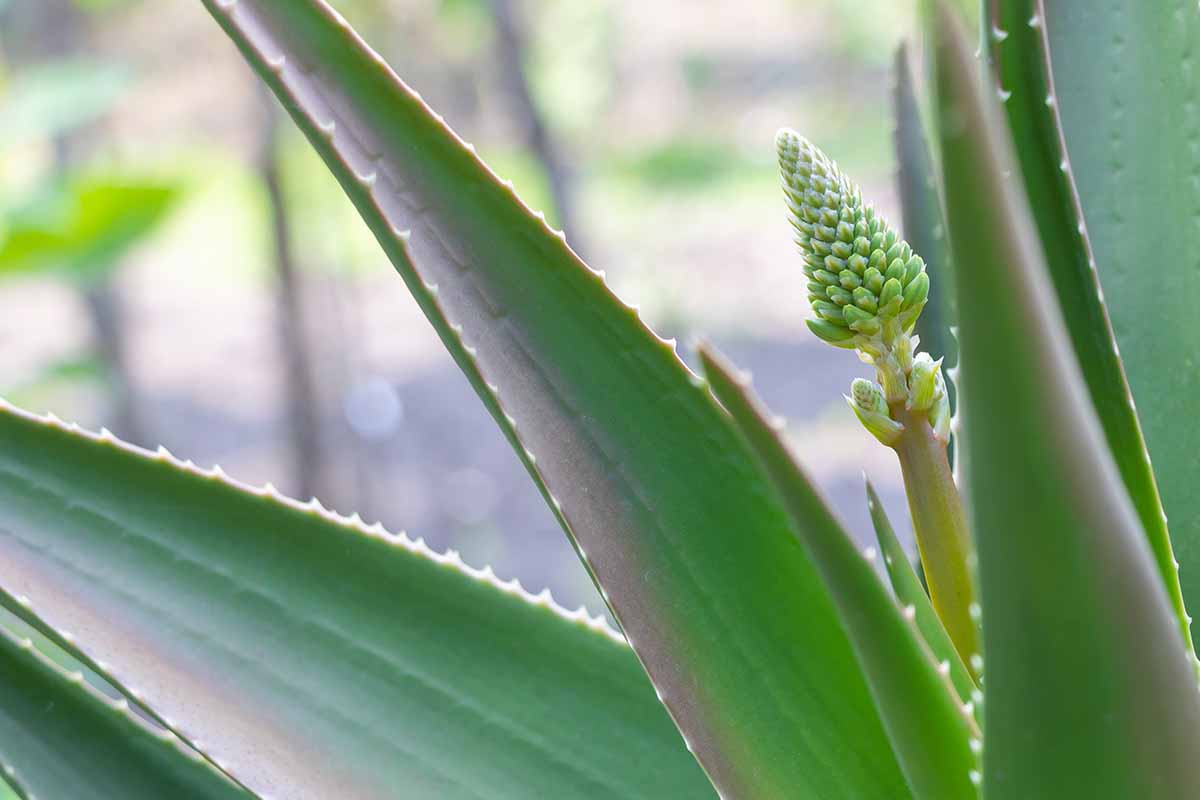
Unlike monocarpic succulents such as agave, which bloom only once in their lives and then die off, you may get to experience the flowering process in your aloes for many years to come, with appropriate caretaking.
Anatomy
Rather than opening to reveal one large flower, the bud you spotted will continue to grow into a long stalk to form a flower spike or raceme.
At its full height, individual buds will develop at the top, or spaced along the stem, in a bottlebrush, spray, or cone-shaped arrangement.
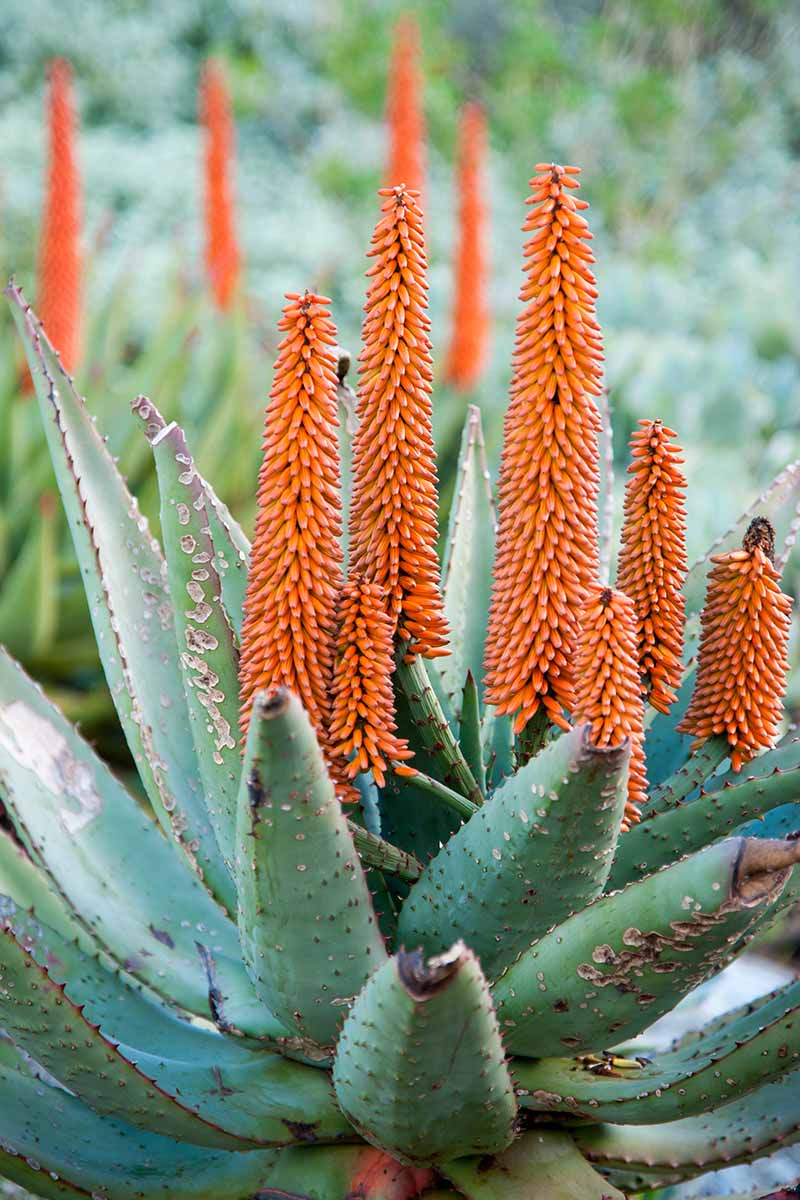
Racemes on smaller species like Aloe barbadensis, or aloe vera, can reach about 12 to 18 inches in height, whereas larger species typically produce taller racemes – sometimes well over 24 inches.
Species such as A. arborescens, the candelabra or krantz aloe, usually bloom from each individual crown at the same time, forming a set of spikes with stunning red-orange blooms.
Red and orange are the most common colors displayed among the aloes, but other colors such as yellow, coral, or pink are also a possibility.
Each flower is bell- or tube-shaped, and usually ranges between three-quarters of an inch to about two inches in length.
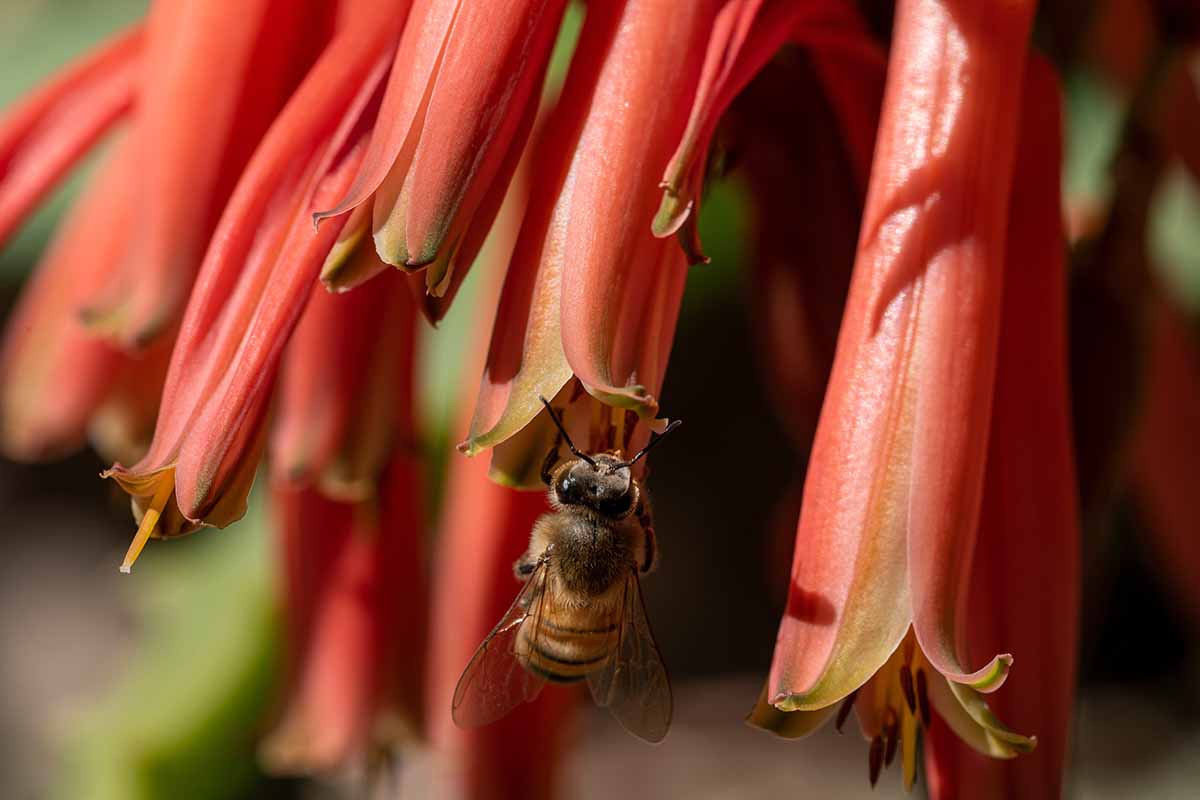
It takes some time for a slow-growing succulent to reach maturity, and flowering won’t typically occur until the plant’s third or fourth year of life.
Once mature, they usually produce at least one raceme per year, and may sometimes bloom twice or more per growing season.
Specimens grown outdoors have a better chance of budding, which typically occurs in the summer, while indoor specimens may bloom at any time – or not at all.
It’s generally less likely for houseplants to produce flowers unless adjustments are made to the average indoor growing conditions.
How Can I Encourage My Aloe to Bloom?
One of the biggest mistakes that gardeners make when growing succulents is to provide too little sunlight. Low light reduces the likelihood of seeing blossoms develop.
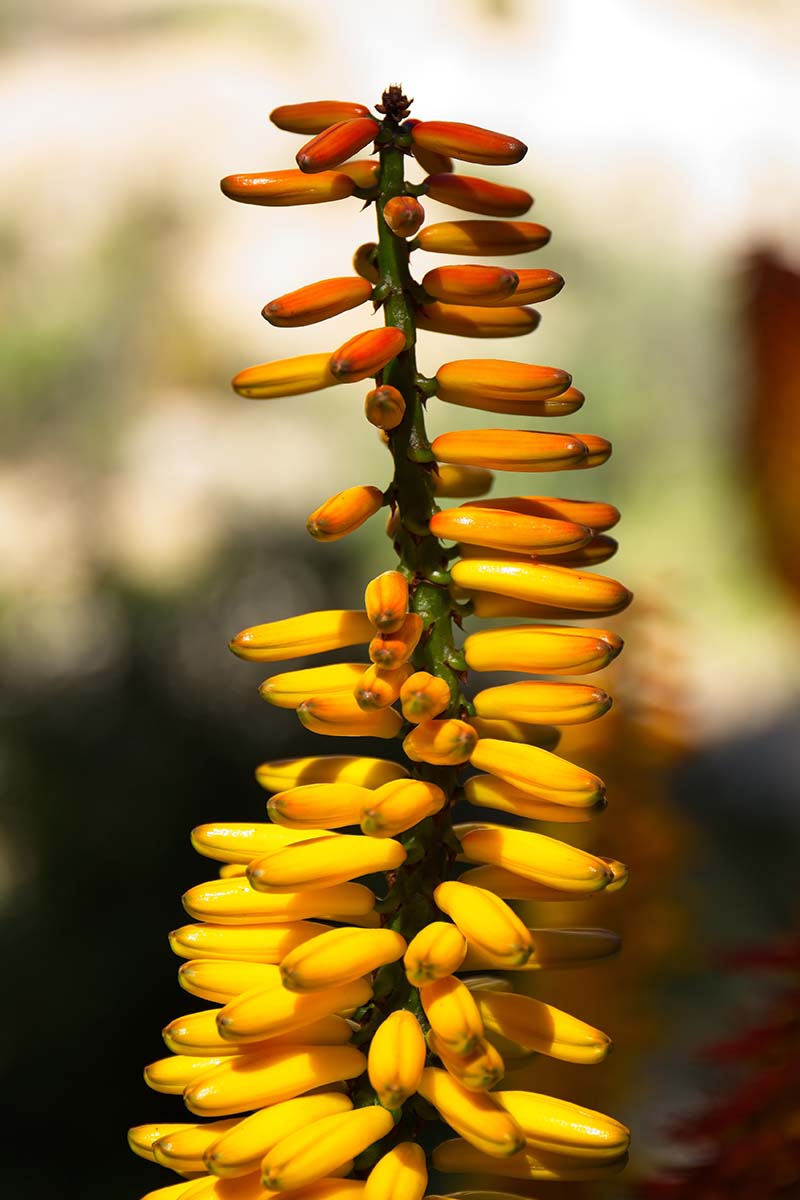
Members of the Aloe genus need a minimum of six hours of direct sunlight per day, but almost all types prefer eight hours or more.
If your houseplant is growing in a dimmer part of the home, move it to a bright window, sunroom, or enclosed porch where it can soak up more rays throughout the day.
Outdoors, planting in a part of the landscape that receives full sun through most of the day is preferred.
You can learn more about growing these plants outdoors in our guide.
Well-drained soil is a must, as sitting in excess water will lead to poor health, which reduces the chance that racemes will be produced.
A medium specifically formulated for succulents works best, such as Tank’s Pro Cacti and Succulent mix. It’s available in one-and-a-half-cubic-foot bags from Amazon.

Tank’s Pro Cacti and Succulent Mix
Warmth is another crucial requirement. Exposure to extended cooler temperatures won’t encourage the process to begin. Daytime temperatures should ideally fall between 65 and 80°F, and evening temperatures should be at least 10 degrees cooler.
This temperature range will create an environment where your specimen can easily perform healthy metabolic processes such as nighttime photosynthesis.
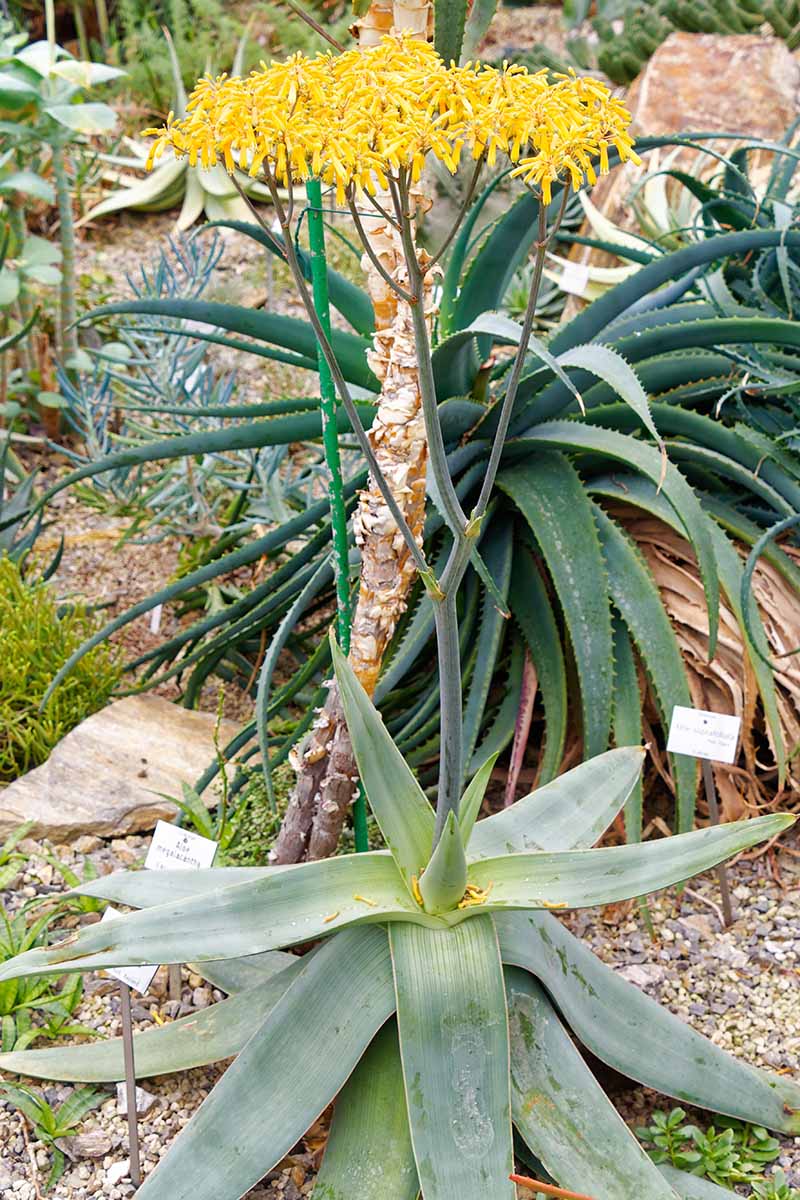
In regions where summer temperatures climb in the spring and summer months, move houseplants outdoors.
Provide shelter from excess rain and low temperatures, but allow time for basking in the warmth and sunlight for as long as possible each day.
Light feeding can also help to boost your plant’s health and kick off the process. In early spring, a fertilizer spike or diluted liquid can be added to increase available nutrients.
Don’t overdo it with the fertilizer, though, as too much can cause damage such as spongy, weak stems.

Leaves and Soul Fertilizer Pellets
Slow-release products such as Leaves and Soul Fertilizer Pellets, available from Amazon, are perfect for the job. Apply according to package instructions.

A liquid such as Espoma Organic Cactus Plant Food is available from the Espoma store via Amazon.
It’s also best to remove and relocate pups, since supporting those additional plants requires a lot of energy that can be diverted to budding instead.
You can replant by following the steps outlined in our guide to rooting pups.
With these key factors in mind for forcing blooms, let’s talk a bit about how to support and care for a specimen after the process begins.
Care Tips
When buds develop, you may feel obligated to provide more water. But succulents rarely require frequent watering, so stick to a more normal schedule.
This can vary depending on where your aloe is planted, and if it has received any rainfall. Indoors, water only when the soil feels dry a few inches below the surface.

Add enough water to moisten the soil thoroughly, and make sure excess drains off. Empty any saucers beneath pots.
Outdoors, water no more than once per week in the absence of rain.
Just as lots of sunlight is important to induce flowering, it’s equally important for the succulent to support its racemes after they’ve appeared.
Be sure to provide at least six, but ideally eight, hours of sunlight per day. Moving an indoor specimen outdoors is helpful in appropriate temperatures, as noted previously.
If you’re a bit late to the game and missed your chance to fertilize before budding began, it’s a good idea to add a fertilizer spike or light application of granular or liquid fertilizer during the flowering phase.
Most of the time, blooms can last for several weeks.
For complete information on caring for aloe year-round, check out our guide.
The raceme will eventually dry out and turn brown. Seed pods will develop at the top, which will also dry and crack open. At this time, seeds can be collected if you choose to do so. Otherwise, deadhead by pruning spent flower stalks at the base.
Collecting Seeds
If you’d like to be able to collect seeds from your aloe, hand pollination is usually necessary in an indoor setting. Outdoors, plants that are grouped together may produce viable seed on their own.
Dry seed pods that crack open signal maturity. Prior to cracking, the seeds inside the pod are not usually viable.

Forcing them open, or pulling or cutting the racemes off before they are dried and brown, will halt the curing process and you’ll be left with wasted seeds that won’t sprout.
It may take some patience, but it’s well worth it if you’d like to propagate some new specimens from seed at home.
Drawstring mesh bags can be gently tied around the maturing pods if you’re concerned that you’ll miss the opportunity to collect them before they fall to the ground – just be sure that the bags are not holding moisture, as this can lead to mildew growth and rotting.
Once the seeds are collected, they should be planted as soon as possible. Stored seeds quickly lose viability.
Stunning Succulents with Beautiful Blooms
So, not only do you have a lovely, healthy aloe, but that little beauty is going to reward you with flowers too!
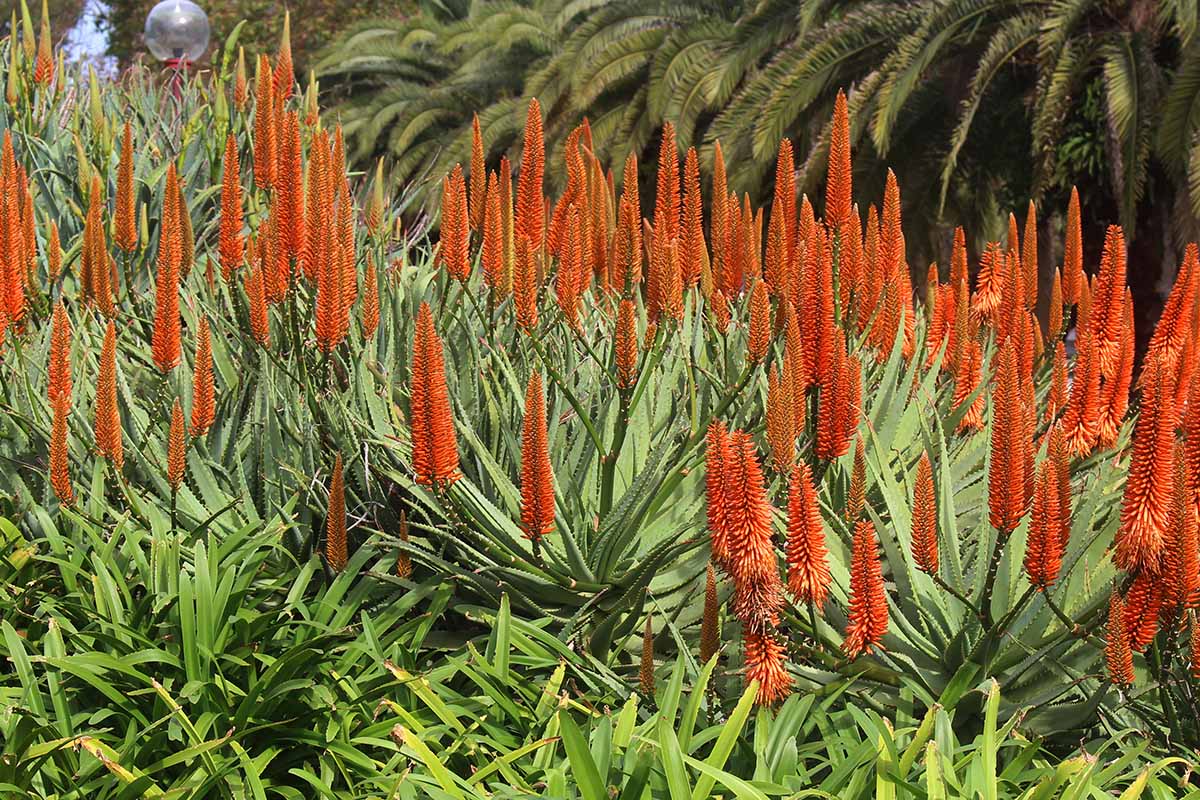
I don’t know about you, but I personally love the shapes and colors that flowering members of this genus exhibit. They’re so distinctive and attention-getting!
I hope you’ll share some snaps of yours in the comments – we’d love to see what you’ve got growing, and answer any questions you might have.
And, if you’re seeking more guidance in growing and caring for aloe, check out these guides next:

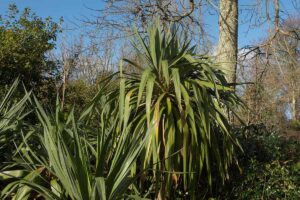

I went by the side of the complex and same the aloe Vera plant blooming much to my surprise. Never have I ever seen this plant bloom. It is beautiful.
Lovely! Thanks for sharing!
Hey so I’ve had my aloe bloom multiple time and got seeds a few times. But for some reason something happened to this bloom and it looks like the flower has a plant growing out of it. There are like 8 flowers doing it. Honestly looks like a mutation – has anyone ever seen this before?
Can you share photos, Joshua?
I just noticed these today. First time I’ve seen aloe have a bud or flowers.
Those look great, Brigette! Thanks for sharing!
I have a mother and daughter they like to show up each other. Daughter is closest to camera
A lovely family photo! Thanks for sharing, Loretta!
Here’s my lovely beauty!
Wow that’s beautiful! Thanks for sharing, Jay.
Here is mine 5 year old and bloomed this year indoors
Indoors in Manitoba canada
Thanks for sharing, Cheryl. I’m sure it will look lovely once the buds open! Be sure to continue providing it with plenty of sun!